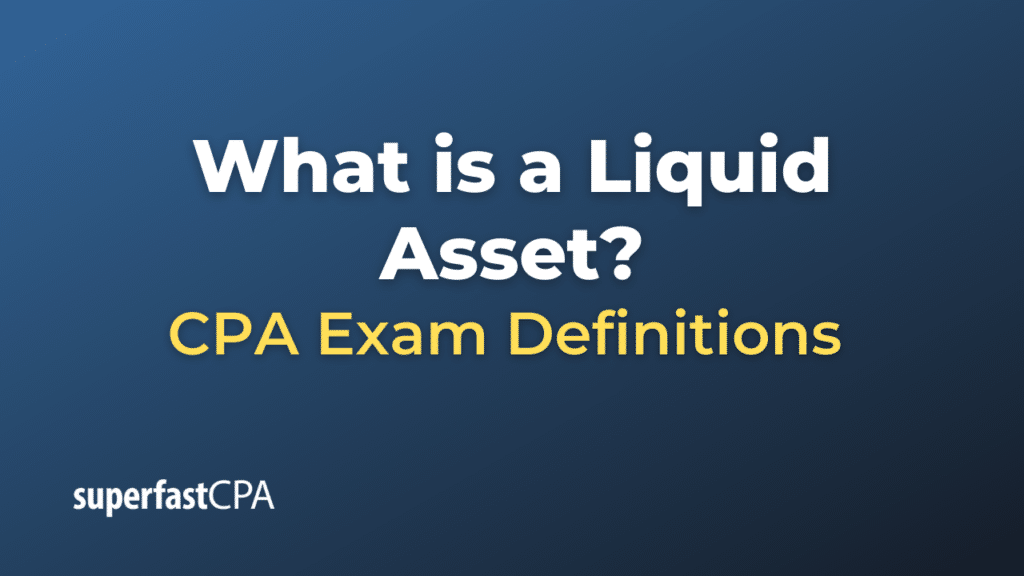Liquid Asset
A liquid asset refers to an asset that can be quickly converted into cash without losing much of its value. In other words, these assets can be sold on short notice with minimal impact on their price. They are considered highly liquid because of the ease and speed with which they can be traded for cash.
Examples of liquid assets include:
- Cash: The most liquid asset of all. It does not need to be converted into anything else.
- Checking or savings accounts: Funds in these accounts are readily accessible, and can easily be withdrawn or used for transactions.
- Marketable securities: Stocks, bonds, or other securities that are traded on an open market are usually quite liquid. They can typically be sold quickly, assuming a well-functioning market.
- Money market funds: These are types of mutual funds that invest in short-term, high-quality debt. They can generally be converted into cash very quickly.
- Treasury bills: These are short-term U.S. government debt instruments, and they’re one of the most liquid investments outside of cash itself.
The liquidity of an asset is an important characteristic because it impacts how easily an asset can be used to meet immediate cash needs. Businesses, for example, need sufficient liquid assets to cover short-term obligations. Similarly, individual investors might need liquid assets for emergency funds or short-term living expenses.
Example of a Liquid Asset
Let’s consider a personal finance example to illustrate the concept of a liquid asset.
Imagine that Sarah has the following assets:
- $10,000 in a checking account
- $20,000 in a savings account
- $50,000 in stocks and bonds
- A car worth $15,000
- A house worth $250,000
In this case, the most liquid assets Sarah has are the funds in her checking and savings accounts, as well as her stocks and bonds. These can all be quickly converted into cash. If Sarah needed $5,000 for an emergency expense, she could easily withdraw this amount from her checking or savings account, or she could sell some of her stocks and bonds.
The car and the house, on the other hand, are considered less liquid assets. Selling a car or a house usually takes time and involves various transaction costs (like listing the property, paying realtor fees, etc.). In addition, Sarah might not get the full market value for these assets if she needed to sell them quickly.
So in this scenario, Sarah has $80,000 in liquid assets (cash, savings, and securities) and $265,000 in less liquid assets (car and house).













